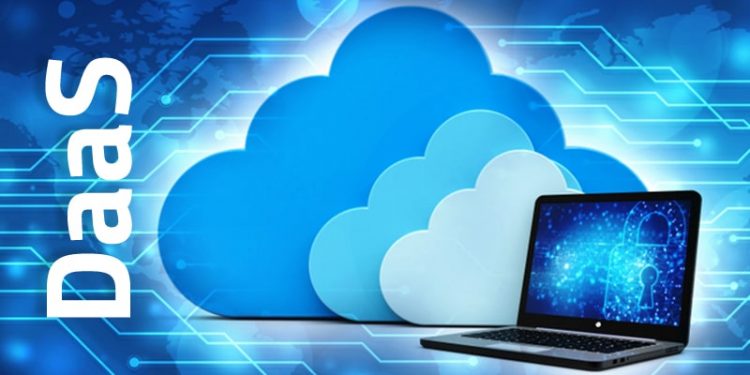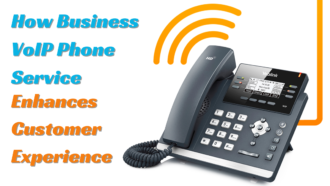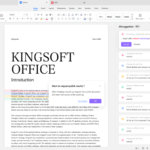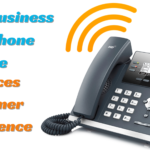Why Does DaaS Make Sense for Today’s Enterprise?
With the increasing adoption of cloud computing technology in many businesses, they are considering deploying Desktop as a Service. All companies, regardless of size, accept Desktops as a service for their cloud workspace. Desktop as a Service means moving end-user desktops to the cloud, like cloud servers.
DaaS is not a new technology in the market. Still, it is emerging as the latest trend, and vendors offer this service.
Virtual desktop infrastructure (VDI) replaces traditional computers with virtual power in your data centre. Many companies have an exceptional VDI setup. However, they are still searching for solutions to expand their business with the cloud and minimize the management burden.
DaaS solutions fix the obstacles of conventional desktops and laptops and assist as a program to deliver VDI from cloud technology.
About DaaS (Desktop as a Service)
DaaS is a cloud computing service. The user’s desktop operating system operates with a virtual machine hosted by a cloud provider. The desktop operating system is mostly Windows or Linux, with cloud hosting services that are public, private, or hybrid.
A third party and charge usually operate public clouds based on the number of services you use. Examples of public cloud services are Microsoft Azure and Amazon Web Services. In a public cloud provider, multiple users share the same hardware, storage, and network resources.
A private cloud is operated at your company’s data centre. The hardware, storage, and network hosting are only for your business’s utilization. In this service, you can control everything. Still, you will require IT staff for physical infrastructure management to deliver the cloud resources.
Hybrid cloud service is also the same. However, you can specify the hardware, storage, and network with the third-party colocation service provider for organizing data centre hosting. With hybrid services, you can benefit from public and private cloud services. It offers more control and enhanced security measures over the public cloud.
Public or hybrid cloud deployment of DaaS services enables users to access desktops via the Internet. It gives them the leverage to access from anywhere. Be it at home, on a business trip, meeting with the client, or on the office premises. There is no requirement to set up a specific IT department and maintain multiple devices for the user.
How has the market transformed with DaaS in 2024?
Cloud desktops are becoming essential for on-premise workstations –
Previously, businesses dependent on the DaaS platform utilized cloud desktops to supplement their workstations. However, nowadays, many companies are acquiring the complete model of cloud desktops over the on-premises systems. This helps the work culture, including remote employees using their devices to access the cloud desktops. This provides a minimal reason for investing in on-premises work systems.
DaaS is expanding beyond enterprise utilization –
DaaS was used primarily by large businesses, where IT teams managed DaaS services straight from the public cloud vendor.
2024 DaaS will be transformed and accessible to small and medium-scale businesses. They offer a DaaS platform with deployment and management services for small businesses. They provide functionalities like compatibility between cloud desktops and customer’s devices. It will simplify the procedures of cloud desktops for small or medium-scale businesses.
DaaS is becoming a necessity –
After the pandemic, cloud computing has changed the work culture globally. Almost every business has given leverage of remote access to employees. DaaS service offers employees access from anywhere and anytime without any location constraint. Cloud desktops are continuously emerging as a crucial and necessary component of IT infrastructure.
No need to use public cloud for DaaS –
In the past, you needed to sign up and install a DaaS service from public cloud providers to use cloud desktops. Configuring the DaaS service to meet your business needs requires appropriate knowledge and skill.
In 2019, new cloud service providers started offering DaaS services to companies to deploy and organize cloud-based DaaS services. They will recognize the public cloud platform’s compatibility to attain user requirements, providing cloud desktops as effectively managed services. DaaS services no longer need to collaborate with large public cloud service providers.
Benefits of DaaS for Enterprises
Convenient management and maintenance –
With DaaS solutions, IT companies will have convenient management. In traditional IT practices, handling software concerns such as complex drive updates, application installations, etc., usually requires the IT team to resolve the issues. However, in DaaS, every user will have some of the standard VM images in the cloud, and only those images require patches and driver updates. The cloud service provider handles the maintenance work.
Cost-effective –
DaaS services offer pocket-friendly desktops and laptops over traditional on-premises computers. In the DaaS solution, users’ devices need only a web browser to operate the virtual machine available on the cloud. You don’t need numerous disks, RAM, or a sturdy CPU. The software’s licensing cost is almost negligible compared to the upfront cost.
Enhanced security –
DaaS services provide enhanced security measures. All the desktops connected to the server communicate with the cloud provider’s data centre’s secure network, and the desktop data is stored in the virtual machine.
Automated data backups and disaster recovery –
In the DaaS solution, desktops are available with the cloud platform. Users do not save any information or files on their devices, so there is no requirement to back up data on their devices. This frees the IT team’s effort for installing and configuring software backup on users’ devices.
The VM backups are stored offsite for the disaster recovery plan. If any disaster happens, desktops can recover all business data with the new virtual machines. This will help maintain business continuity.
Better flexibility –
DaaS allows employees to operate the available system and access their virtual Desktop to maintain business continuity till their old machine is repaired or replaced. Similarly, suppose any cyberattack happens on the user’s system. In that case, rebuilding and cleaning the system is easy, as the data gets stored on the cloud platform. When your old machine is available, you can access the cloud desktop and resume your work where you paused.
Remote access –
Nowadays, every employee likes to work in a flexible work environment. The DaaS solution helps in reducing backup and security challenges. Companies can provide inexpensive devices for remote access to cloud desktops. Employees can securely access business data from any device. Bring Your Device helps communicate between personal devices and virtual desktops with keystrokes, clicks, and pixels. Hence, there is no way that viruses or malware can transfer from a user’s system to a business system.
All in all, with all these advantages, you can transfer all the end-users to DaaS. It’s time to migrate your business to experience the benefits of DaaS. DaaS technology has evolved remarkably in recent years. The end users are chronic in using cloud computing techniques with services such as Office 365 and other tools.

















